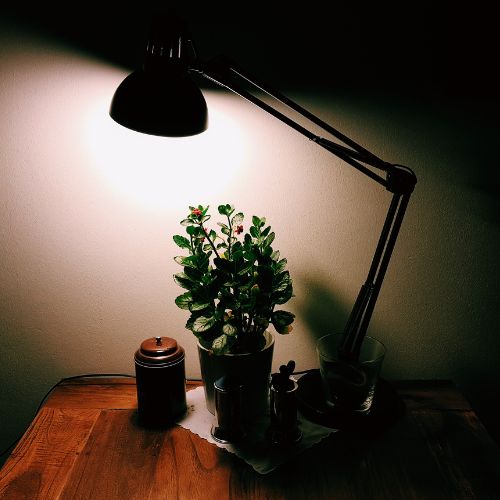How to Dementia Proof Your Hallways and Stairs
For individuals with dementia, navigating their own homes can become a daunting and potentially dangerous task. Hallways and staircases can pose particular challenges, as they often require more complex navigation and can be sources of anxiety or confusion. Let’s explore some simple steps you can take to “dementia-proof” your hallways and stairs, making your home safer and more accessible for individuals living with dementia.
Lighting

One of the simplest and most effective ways to make your hallways and staircases more dementia-friendly are to ensure that they are well-lit. Dementia can affect an individual’s depth perception and ability to see contrasts, making it more difficult for them to navigate dimly lit spaces.
Make sure that your hallways and staircases are well-lit, with light switches located at convenient intervals. Consider using motion-activated lights or night lights to provide additional illumination at night without being too bright or distracting.
Real-life example: One family noticed that their father with dementia was struggling to navigate the staircase to his bedroom at night. They installed motion-activated lights on the staircase, providing enough light for him to navigate safely without causing too much disturbance.
Clear Pathways
Individuals with dementia may become disoriented or confused, leading to difficulty navigating even familiar spaces. It’s important to ensure that your hallways and staircases are free of clutter or obstacles that could cause someone to trip or fall. Remove any unnecessary furniture or decorative objects that could be tripping hazards, and make sure that carpets or rugs are secured firmly to the floor.
Real-life example: A family noticed that their mother with dementia was frequently tripping over a decorative rug in the hallway. They removed the rug and added a non-slip mat to the floor to prevent further accidents.
Handrails and Grab Bars
Staircases can be particularly challenging for individuals with dementia, as they require more complex navigation and can be a source of anxiety or confusion. Consider installing handrails or grab bars along the staircase to provide additional support and stability. Make sure that they are securely anchored to the wall and positioned at a comfortable height for the individual.
Real-life example: A family noticed that their grandfather with dementia was becoming increasingly unsteady on the stairs. They installed handrails on both sides of the staircase, providing him with additional support and allowing him to navigate the stairs with more confidence.
Contrast and Color
As dementia progresses, individuals may experience changes in depth perception, color perception, and visual acuity. Using contrasting colors and clear, bold signage can help individuals with dementia better navigate their surroundings. Consider using contrasting colors for handrails or stair treads, or adding brightly colored tape to the edges of steps to make them more visible.
Real-life example: A family noticed that their mother with dementia was having difficulty distinguishing the edge of each step on the staircase. They added brightly colored tape to the edge of each step, making it easier for her to navigate safely.
Signs and Labels

Individuals with dementia may become confused or disoriented, particularly in unfamiliar surroundings. Using clear, easy-to-read signage can help them better navigate their surroundings and reduce their anxiety. Consider labeling doors with large, clear signs or using picture-based labels to help individuals find their way.
Real-life example: A family noticed that their father with dementia was becoming increasingly anxious when trying to find the bathroom at night. They added a large, clear sign to the bathroom door, making it easier for him to find his way in the dark.
What are some common hazards in hallways and stairways for people with dementia?
When it comes to hallways and stairways, several hazards can be especially dangerous for people with dementia. One of the biggest risks is falls, which can result in serious injuries. Common hazards in these areas include poor lighting, cluttered floors, loose carpeting or flooring, and steep or narrow stairs.
In addition, people with dementia may struggle with depth perception or coordination, making it harder for them to navigate stairs or avoid obstacles in hallways. It’s important to identify these hazards and take steps to address them to keep your loved one with dementia safe in your home.
How can lighting be improved to make hallways and stairways safer for people with dementia?
Improving lighting is a crucial aspect of making hallways and stairways safer for people with dementia. As we age, our eyesight tends to deteriorate, making it difficult to see in low-light conditions. This can be even more challenging for people with dementia who may have trouble processing visual information.
To improve lighting in hallways and stairways, consider installing bright and energy-efficient LED bulbs. These bulbs can provide ample light while also reducing energy costs. You may also want to install motion-activated lights that turn on automatically when someone enters the area.
Another way to improve lighting is by installing night lights. These small lights can be plugged in and left on all night to provide a soft glow that illuminates the way. You can install night lights in hallways, stairways, kitchen, and bedrooms to help people with dementia navigate the space safely at night.
In addition to these lighting solutions, it’s important to consider the placement of light fixtures. Make sure that light fixtures are evenly spaced and positioned at a height that is easy to reach. This can help to reduce glare and shadows, which can be disorienting for people with dementia.
What are some ways to reduce clutter in hallways and stairways to minimize tripping hazards for people with dementia?
Clutter in hallways and stairways can be a major tripping hazard for anyone, but it’s especially important to minimize these hazards when you’re caring for someone with dementia.
Here are some simple ways to reduce clutter and make sure that your loved one can move around the house safely:
1. Keep pathways clear
Make sure that there’s always a clear path for your loved one to walk through. This means removing any furniture, rugs, or other obstacles that might get in the way.
2. Declutter
Get rid of anything that you don’t need in your hallways or stairways. This might include extra shoes, coats, or other items that tend to pile up in these areas.
3. Install storage
Consider installing shelves, hooks, or other storage solutions that can keep items off the floor and out of the way. This will not only make your home safer but also help keep it organized.
4. Use wall space
If you’re short on storage space, consider using your walls to hang things like coats, hats, or bags. This will free up valuable floor space and keep items within easy reach.
5. Check for hazards
Take a close look at your hallways and stairways to identify any potential tripping hazards. This might include loose carpeting, uneven flooring, or any other obstacles that might pose a risk.
By taking the time to declutter and organize your hallways and stairways, you can help minimize the risk of falls and other accidents for your loved one with dementia. With a few simple changes, you can create a safer and more comfortable environment for everyone in your home.
Conclusion
Dementia-proofing your hallways and stairs can greatly improve the safety and quality of life for individuals with dementia. By implementing simple changes such as adding lighting, removing clutter, and installing handrails, you can create a more dementia-friendly environment in your home.
Remember to always consider the specific needs and abilities of the person with dementia when making changes. It is important to create an environment that promotes independence, while also prioritizing safety.
With a little effort and planning, you can create a space that allows for both. Don’t wait until an accident happens, start making changes today to create a safer and more dementia-friendly home.

